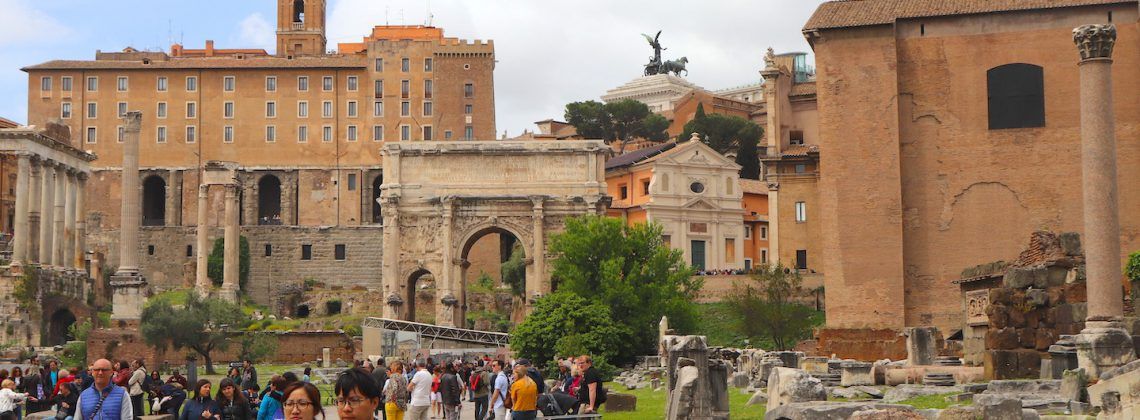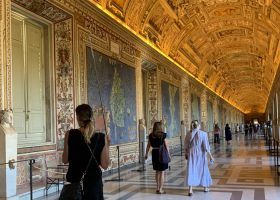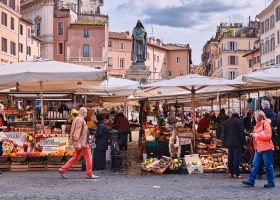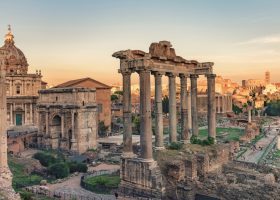Are you planning to explore the ancient city of Rome but not sure what to see in the Roman Forum? Written by a licensed guide of Rome, this series of articles covers all the things you should see in the Colosseum, Roman Forum, and Palatine Hill with explanations. Here’s what to look for as you explore the Roman Forum.
Pro Tip: Doing some research ahead of your trip to Rome? Bookmark this post on your internet browser. This way you can circle back to it when you’re exploring the Roman Forum. See our guide to Rome for more resources to help you plan your trip. Also, Check out our top-rated Colosseum tours, which include admission for the entire area, including Palatine Hill.
Things and Places To See in the Roman Forum
At this point, you’ll probably already have seen the Colosseum and Palatine Hill. We’ve created this list of must-see things at the Roman Forum to help guide you around this incredible archeological site. To start your journey through the Roman Forum, walk down toward the Arch of Titus.
13. Via Sacra
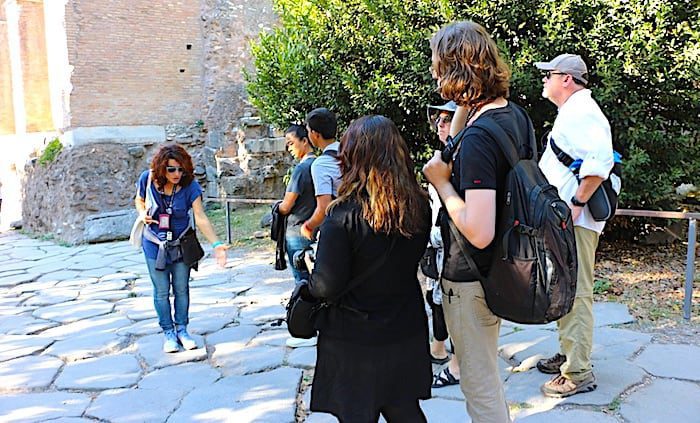
The road running through the arch is the Via Sacra or sacred way. It was an important road as you can guess by its name. In ancient Roman times, triumphant marches were held after big victories, which happened often. These marches would travel down the Via Sacra and into the city.
The road saw considerable improvements over time. The rows of colonnades, for example, and other effects to highlight its importance. The Arch of Titus, the next destination, is one of those improvements.
One of the coolest details of the Via Sacra is that you can still see the wear and tear from Roman times on the pavers. You’ll see everything from its smoothness to the crevices that wagon wheels created over time. This is definitely one of the top things to see at the Roman Forum.
Address: Via Sacra
12. Arch of Titus
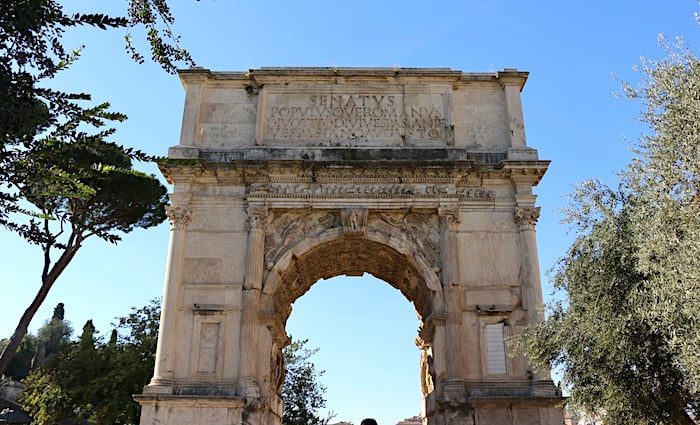
The Via Sacra extends into the Forum but not before passing through the Arch of Titus. Domitian built this arch to commemorate Titus’ famed victory that quelled the revolt in Jerusalem in which he brought 60,000 slaves and endless wealth back to Rome. As a result, they had the means to build the Colosseum.
The Arch of Titus is a considerable point of interest for many reasons. First is its position near the Colosseum on top of a hill. It is also one of only three arches that remain of the 36 original arches.
The arch gains significant interest from many people from Jerusalem or of Jewish descent because it details a major event in Jewish history. Rome controlled Judea at the time and they rebelled against the control. It had worked out pretty well for them a few hundred years earlier under the Maccabees so they gave it another shot.
The War
Historians often refer to this war as the Great Revolt and it was exactly that. Eventually, the Romans succeeded in re-conquering Judea after breaking through three walls, which took seven months. It’s important to mention how the Romans treat war at this point.
If you tried to defend yourself but gave in fairly quickly and joined the Romans, then they treated you pretty well. It was a really good deal. They’d have wanted to take some spoils and possibly some wives, but losing would have been far worse. Victory against the Romans was also rare and often not long-lasting.
If you fought back too hard, on the other hand, you could expect far worse treatment. They’d sack your city, take everything you have, rape most of your population, and enslave as many people as they could transport back to Rome. That’s what happened in Judea. Over 60,000 slaves came back to Rome with Titus and, ultimately, built the Colosseum.
Beyond the horror story of the Roman war, the arch helps connect some historical dots. It verifies that Titus’ campaign happened and that he returned victoriously. Paper doesn’t hold up well over time, but stone does. Historians detailed most of this in writing as well as in detailed reliefs depicting the events.
Interior Decoration
On top of historical verification, the reliefs inside the arch show a huge leap forward in Roman artwork. You have to understand that at this point in history, A.D. 81, most people in Europe were living in cold wet huts fending for their lives. It was the Middle East that was prospering. The Gauls were trying to stay dry while the Romans were creating the illusion of space in travertine.
The illusion of space is when an artist uses your perspective against you to make an area look bigger and possibly even give the illusion of motion. Basically, it was baroque artwork 1,500 years before baroque artwork entered the scene. On the arch, you can see the procession of the Jews holding the menorah (seven candelabra) as they return to Rome as slaves.
On the other side, you see Titus on horseback triumphant over his enemies. In the center, look up and you’ll see the symbol of Rome, the Eagle, with wings spread. The arch is a must-see in the Roman Forum and Rome, in general.
Address: Arch of Titus
Not ready to book a tour? Check out our Rome Guide for more info.
11. Temple of Venus
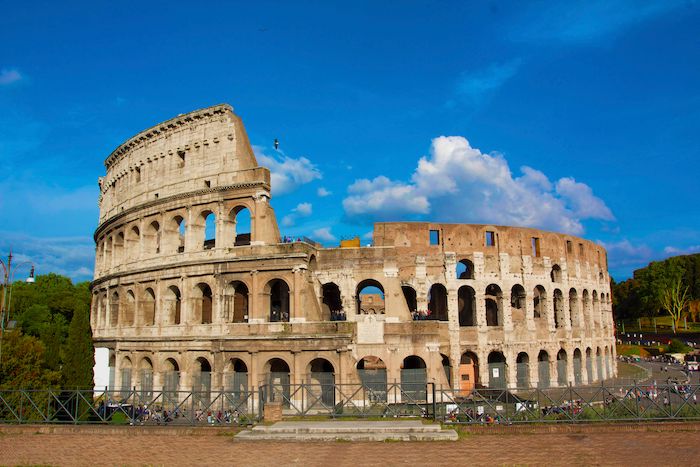
With the Arch of Titus at your back and the Colosseum to your front, you’ll see a structure to your left. Head to that building and work your way towards the Colosseum. There is a great balcony where you can take a picture like the one above. This is the Temple of Venus, a massive temple that Emperor Hadrian built.
Address: Temple of Venus
10. Basilica of Constantine (Temple of Maxentius)
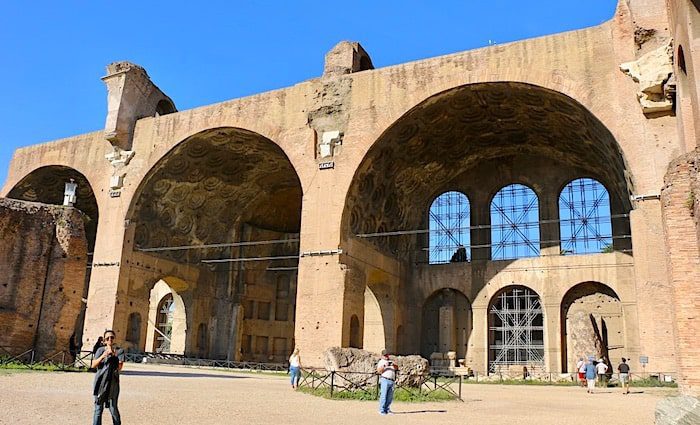
Originally the Basilica of Maxentius, this building was named for the emperor who ruled Rome before Constantine. The two of them fought a historic battle at the Milvian bridge, which is still standing today in the northern part of the city.
As the legend goes, Constantine saw a symbol burning across the sky on the eve of the battle. The next day, his soldiers drew the cross on their shields and they were successful. This victory was attributed the title of the first Christian victory ever.
The central nave of the building was an impressive 265 feet (80 meters) long and 83 feet (25 meters) wide. Today, only three arches can be seen. Originally, you can imagine there was a vaulted ceiling and another three arches symmetrically placed in front of the remaining three, creating an imposing, closed building. The entrance would have been at the southern end. At the northern end, there would have been a gigantic statue of Constantine himself.
In ancient Roman times, the word “basilica” signified a courthouse or a place to conduct business matters when the weather wasn’t permitting outside. The standard architecture consisted of a long nave, with apses on both sides, supported by huge columns. When Christianity became the main religion, they incorporated this architectural style into their churches and that’s where we get the modern meaning of the term “basilica” today.
Address: Basilica of Constantine
9. Temple of Romulus
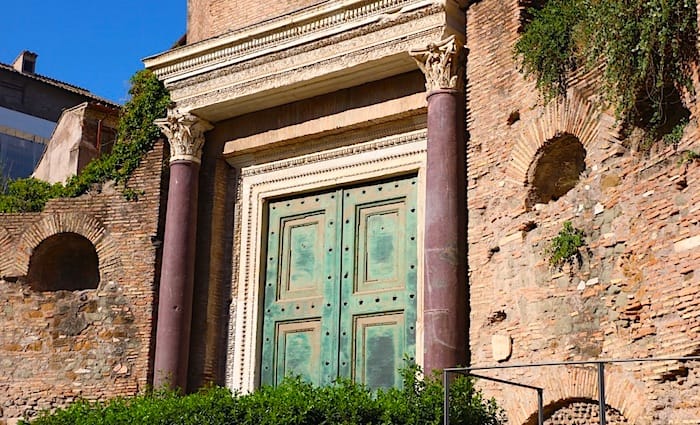
Don’t mistake this with the Romulus who founded Rome. The emperor Maxentius dedicated this temple to his son Valerius Romulus and deified him. Eventually, the emperors prohibited paganism and converted this temple into the Basilica of Santi Cosma e Damiano.
The bronze doors are original from the A.D. 309 structure. Such an old building still in such good shape deserves to be one of the top things to see at the Roman Forum.
Address: Temple of Romulus
8. Temple of Antoninus and Faustina
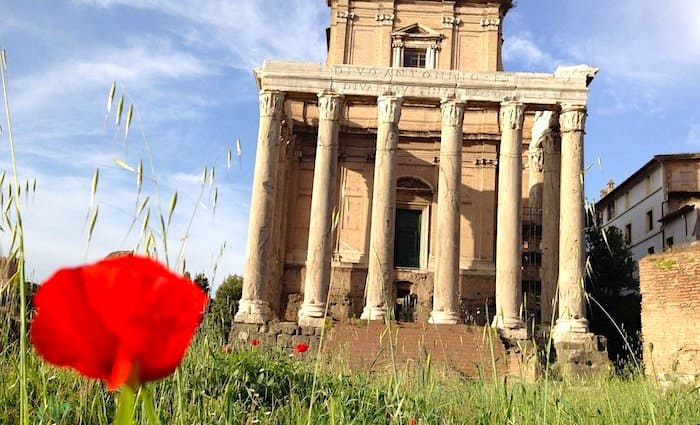
Known today as the Church of San Lorenzo in Miranda, this functioning church is adapted from the ancient Temple of Antoninus and Faustina. Though much of the structure is updated and rebuilt, the original portico encased by marble columns still stands.
Like many churches around Rome, they remodeled this church and built it upon its original structure. As with much of Rome, the various levels of the church reflect modern and ancient Rome. Another great example of this is the Basilica of San Clemente located on the other side of the Colosseum and just a 10-minute walk from the Forum.
Historians consider Antoninus Pius to be one of the five “Good Emperors”. This means that he died of natural causes and didn’t fill the tabloids of the time with crazy deeds. He was quite old already when he became emperor and lived a decent life out of the spotlight. His extremely beautiful wife, Faustina, died quite young. The emperor was so stricken with grief that he made her a goddess and built her a temple. This is a must-see at the Roman Forum for romantics.
Address: Temple of Antoninus and Faustina
7. Temple of Vesta and Eternal Flame of Rome
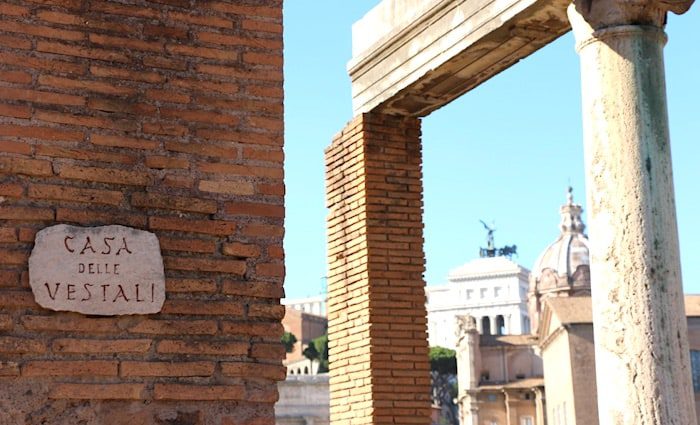
Facing the Temple of Antoninus and Faustina, turn around and you’ll see a circular altar in a shaded area on a slight hill. This is where the vestal virgins cared for the famed Eternal Flame of Rome. Originally surrounded by 20 Corinthian columns, the ruins are a good indication of what the temple may once have looked like.
Today, what remains of the temple is what Mussolini reconstructed in the 1930s after the Forum was excavated. Behind the temple, the House of the Vestal Virgins stands and leads its way up the Palatine hill. Vital to the faith of pre-Christianity Rome, the vestal virgins were priestesses who took a vow of virginity and served for 30 years, beginning in childhood.
Powerful women indeed, the vestal virgins had the power to free slaves and prisoners. Additionally, injuring one of them was punishable by death. The vestals also protected the eternal fire to Vesta, the Roman Goddess of Hearth.
As sacred as the temple was, Roman residents used Vesta’s eternal fire to kindle their own household fires. And that is why this is one of the top things to see at the Roman Forum.
Address: Temple of Vesta
6. Mamertine Prison
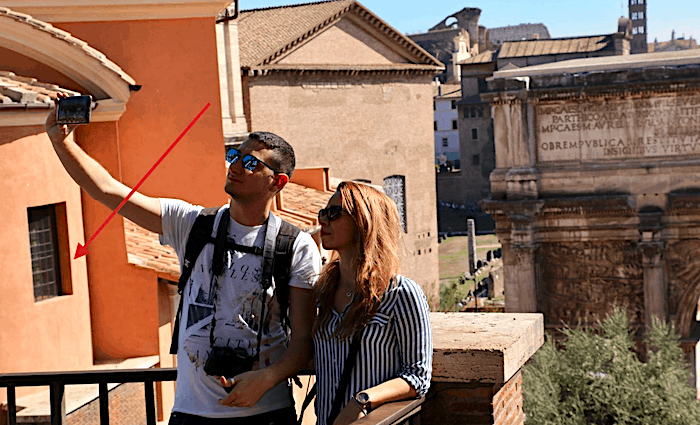
Just outside the northern-facing exit of the Forum, you’ll find the Mamertine Prison. It’s not actually inside the structure, so make sure you’re ready to leave as you won’t be allowed reentry. The prison is said to have been built as early as the 7th century B.C. and was originally referred to as the Tullianum.
According to Christian dogma, St. Peter was imprisoned here prior to his execution on the cross upside down. The prison was not intended for long-term incarceration. It was merely a place to be held prior to a trial and, eventually, execution. Its proximity to the Forum and Capitoline Hill made it accessible.
Peter was not the only prisoner of note to be held here. Jugurtha, king of Numidia, was held in the Mamertine Prison for a short stay and possibly died inside. Vercingetorix, the Gaul chieftain and nemesis of Julius Caesar who attempted unsuccessfully to unite Gaul against the Romans, also died here.
Most generals and high-profile leaders were pardoned after war with the Romans. This was part of their process of getting nations to capitulate. There were some cases of extreme hatred where Romans would be more demeaning to high-ranking opponents. The Mamertine Prison was a foul enough place to seek that revenge. Also, if you wanted to display your human spoils of war, the Palatine Hill was just a short walk away.
Address: Mamertine Prison
5. Temple of Castor and Pollux
Today, the three columns left on this temple are not much to look at, but the remains are spread around the city. The statues of these two dioscuri or demigods sit on either side of the steps leading up to the Capitoline Hill in all their glory.
They are the twin sons of Jupiter (Zeus) by a mortal mother. Hence making them demigods. They are known for their curly blond hair and white horses. Since they are strong young warriors, they were the perfect pair to be patrons to the equites or Roman knights.
Witnesses saw them aiding the Romans against the Latins at the Battle of Lake Regillus in 484 B.C. Later, they were seen in the city of Rome watering their horses at the Juturna Spring. The origin of their temple is where that spring once was but it has been enhanced and renovated multiple times.
The twins represented much of what it meant to be Roman. They were loyal to one another and fought bravely. Romans, like Christians, often chose figures that mirrored their morals and virtues.
Address: Temple of Castor and Pollux
4. Arch of Septimius Severus
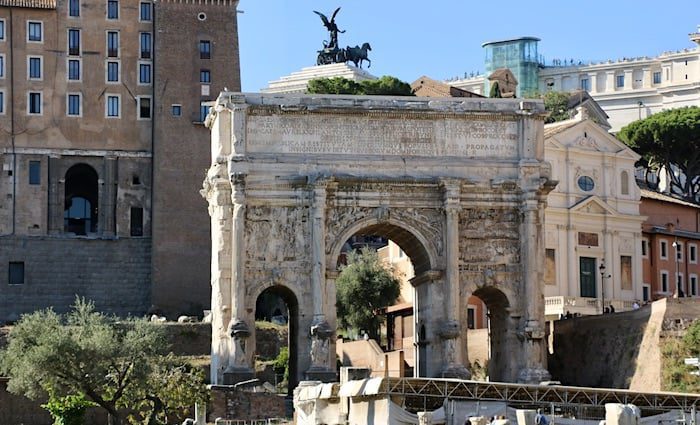
Built in A.D. 203, the Arch of Septimius Severus is one of the biggest arches in Rome. It stands as a testament to Roman hegemony in the ancient world. At this time, the Roman Empire had come to the end of its golden years and would begin to slowly deteriorate from here. Although, they didn’t know it then. For the majority of the Roman world, the Eternal City would last forever.
Emperor Septimius Severus had this arch constructed to commemorate his victory over the Parthians (modern-day Iran). The victory was bittersweet since that region had defeated a Roman army almost 300 years earlier under the leadership of Marcus Crassus. During that defeat, Crassus paid dearly with his life. He was captured and molten gold was poured down his throat to show his greed.
The richly decorated arch was also dedicated to Severus’ two sons Caracalla (who later became emperor himself) and Geta. When Septimius died, Caracalla killed his brother Geta to become the sole ruler. All monuments to Geta and any mentions of him were erased from the history books, including on the arch itself.
Address: Arch of Septimius Severus
3. Temple of Saturn
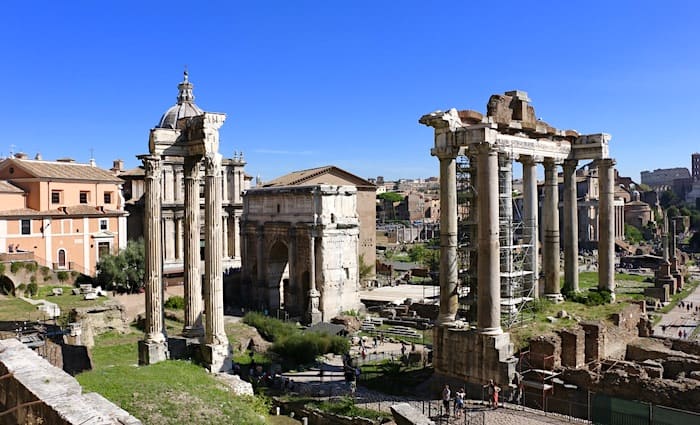
The current temple dates from the 4th century A.D. We know this because of the inscription on the architrave, which states that the Senate had rebuilt this statue after a big fire. The original temple on this same spot was built in 497 B.C.
Today, all that remains is the podium on which the temple stood and eight huge columns of granite and marble. You’ll have to use your imagination, but you can see this temple was once a great and revered place of worship.
The Roman god Saturn supposedly has his roots in the ancient Greek pantheon as the god Kronos. There’s some mystery surrounding what he was actually worshipped for, however, he was represented veiled with a sickle or pruning knife. The practical function of the temple was as the public treasury, which lasted all throughout the Republican period and, on a more limited basis, during the Empire.
The most famous event associated with the god Saturn is the major festival that took place on December 17th, the Saturnalia. This was a huge party lasting for a few days and where roles were switched. Masters waited on the slaves, gifts were exchanged, and more informal clothes were worn instead of the rigid toga. Over time, this festival is how Christmas was transformed into what it is today.
Address: Temple of Saturn
2. Temple of Julius Caesar
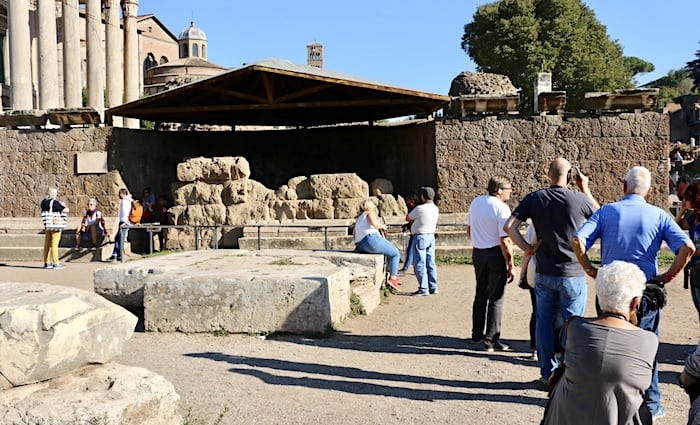
Across from the Temple of Vesta is the Temple of Caesar. In its heyday, this was the centerpiece of the Roman Forum. Dedicated to Julius Caesar and constructed by his adopted son Augustus, Julius Caesar was the first Roman deified after his death and the first to be buried in the Forum itself. For hygienic reasons, nobody could be buried within the city limits at the time, so this was a great honor.
Julius Caesar wasn’t actually considered an emperor. That honor is bestowed on Augustus. What all historians agree on, however, is that his actions led to the downfall of the Republic, which had seriously deteriorated by this point anyway. Once he was declared dictator for life, many aristocratic noblemen feared that he would try and become king. So, he was assassinated. The upheaval that followed led to the creation of the Empire.
A symbol of the Roman Empire’s power, the Temple represented the potency of the new Roman Empire and the grandeur of both Julius and Augustus. The temple is considered to be a political move by many people who were allegedly involved in the murder of Caesar. They supported the project to posture themselves as Caesar-supporters to the masses.
Address: Temple of Julius Caesar
Not ready to book a tour? Check out our Rome Guide for more info.
1. The Curia (Senate House)
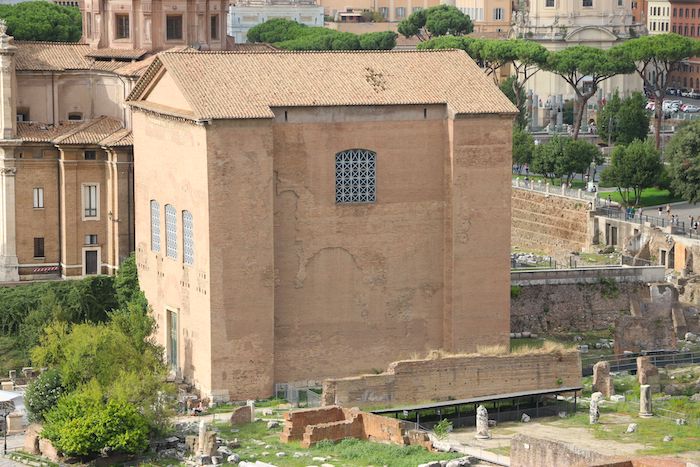
The Curia Julia or Julian Senate House is one of the most intact buildings in the Roman Forum. Unlike most others, the Curia Julia is visible in its restored state. This is due to its conversion into a church centuries later. Still, this large building was the home of the Roman Senate throughout the time of the Empire.
Many people visit thinking this was the spot where Julius Caesar was killed, but don’t be fooled! This Curia was under construction when Julius Caesar was assassinated in 44 B.C. at the Theatre of Pompey (near Largo Argentina in today’s Rome). The roof of this building collapsed in August of 2018 and luckily no one was harmed. Such a historic building is definitely one of the top things to see at the Roman Forum.
Address: The Curia
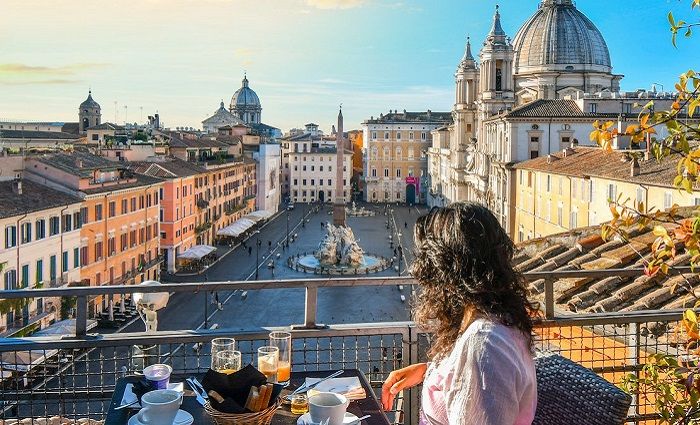
Where To Stay in Rome
Rome has a rich cultural history and many iconic landmarks to explore. Plan where to stay in the magnificent Eternal City in the best neighborhoods.

